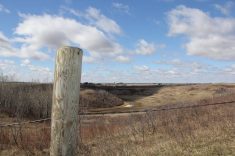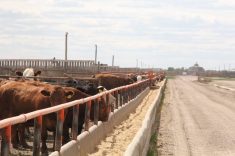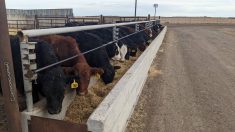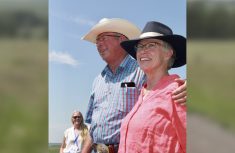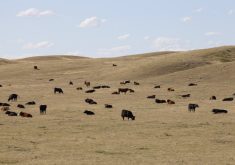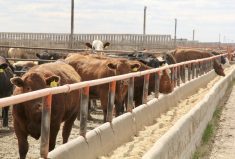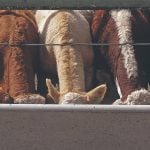A bridge across the South Saskatchewan River would put Short Grass Ranches at one end and the city of Medicine Hat, Alta., at the other.
That’s how close the Lehr families’ cow-calf and feedlot operation is to the urban centre of more than 63,000 people. (A bridge, incidentally, is not in the works.)
Their home place, established in 1951 by Reiny and Esther Lehr, is the site of a 7,000-head-capacity backgrounding feedlot.
Read Also
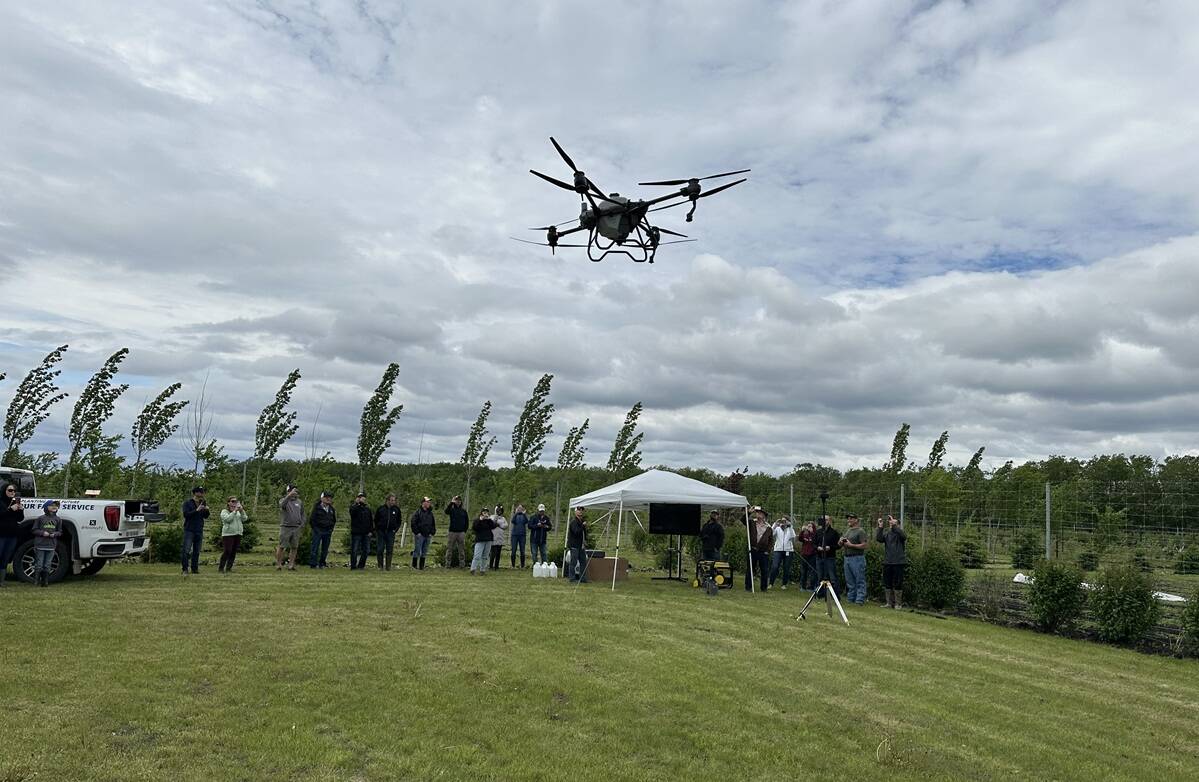
What an abundance or scarcity mindset means for farm and ranch families
Shifting to an abundance mindset means taking stock of what you’ve got and figuring out how to improve those resources.
They also have a small feedlot east of the city at Irvine where they keep heifers and replacements in the winter. They calve out about 1,100 cows.
Cows spend their summers in pastures that stretch as far as 50 kilometres to the east and south into the Cypress Hills.
“We also have 1,000 acres of irrigation at the home place here, which all goes into the feedlot for feed,” said Craig Lehr, one of the third generation involved and current operator of the ranch.
“We have a cover cropping program as well. Once the silage comes off, we cover crop so we have more grazing for the cows and try to limit the feeding we do in the wintertime.”

However, the dry conditions and significant grasshopper pressure the last few years have stalled that program. Craig said they haven’t seeded cover crops for the last two years.
Dry and drought are two words often used to describe this area of Alberta. It’s in the Palliser Triangle, once described as a useless desert, and the summer of 2025 didn’t provide much relief.
But they had built up a lot of reserve grass on native prairie through the previous year after a good spring. They kept yearlings off the grass and spread cows thinner to create that reserve.
The fall of 2024 was also good for moisture, allowing late grass growth. They had decent snowfall over the winter.
“We had the best runoff we’ve had in probably 10 years. Unfortunately, it hasn’t rained all spring,” Lehr said during an interview in June.
Later that month they turned cattle out on to farmland and were crossing their fingers for some winter cereal production for seed.
Craig’s brother Scott manages the farming side of the business, which includes about 3,000 dryland acres.
They’ve made improvements to withstand the dry conditions.

“We’ve gone to absolute zero disturbance,” said Craig. “We’re utilizing every drop of moisture we can and it does show in our crops and in the performance of the crops.”
The irrigated land for feed production is watered from a pump straight out of the river. The Lehrs are not part of an irrigation district but have a water licence and have to monitor how much they use. Some years they are cut back.
Craig said they still have to buy a lot of feed every year, no matter what. They’ve built strong relationships with other irrigated producers and even through the drought have not struggled to get supply.
Last year, he overbought.
“My thought process was, even if this year is decent, feed’s not going to be much cheaper. Now I’m looking really smart, so that’s taking the pressure off of this year quite a bit already,” he said, adding it was quite possible the family wouldn’t make a single bale of their own.
The strong, steady feeder market has been a boon for Short Grass, although the price they have to pay for fall calves takes some of that shine off.
Craig said the family has not considered changing to a finishing lot, preferring to do what they do best. They had a long-term relationship with the feedlot in Brooks but then, when that program changed, they started marketing through Medicine Hat Feeding Co.
They ship liner loads of feeders between 900 and 950 pounds, depending on the market.
“We sell 800 head in about 20, 25 minutes and the guys buy them in liner loads,” he said. “Our market has always been top-quality feeder cattle, and we don’t mix anything that’s not good in with those cattle.”
The Lehrs are constantly sorting cattle to create uniform pens. In 2016, they installed a new handling system that allows Craig’s dad, Randy, to sort 800 cattle smoothly and quickly with less stress on all involved.
Randy said he can start at 7:30 a.m. and be done by noon, sorting three or even four ways. Both said it’s obvious the animals are much calmer.
The feedlot really grew under Randy’s management. Craig said his grandfather, dad and uncles wanted to build a business where everyone had a place to work.
He described them as driven, willing to take risks and able to weather the tough years.
These days the operation uses livestock price insurance to help manage risk.
Craig returned to the operation after three years at Olds College in 2003, the year of BSE, and his own tough year.
“My accountant looked at me after that first year and said, ‘If you want out now, you have to buy your way out.’”
Reiny had developed a succession plan and company structure that allowed for growth, but after his death in 2015 at age 95, the subsequent departure of some of Randy’s brothers and cousins who didn’t want to be involved, the operation is down some partners.
“Dad’s in his 70s and could still outwork most people,” said Craig. “It’s challenging to learn how to operate without all the owners.”
But the fourth generation is getting involved. Scott’s daughter Meranda, who is studying psychology, mental health and addictions, came home from university in mid-April in time to oversee calving.
“It’s pure chaos at the beginning,” she said of calving 1,100 cows. “I come home from finals and jump right into the busy-ness. It’s crazy but I love it.”
After calving is done by mid-June, she helps with haying and harvest and whatever else needs doing.
Her goal is to get a master’s degree and become a registered psychologist, but she doesn’t want to get too far from the farm.
“In an ideal world, it’s going to be both,” she said of her future. “I want to work with kids and young adults and do animal-assisted therapy. I’d like to have my own practice and as well kind of manage the cow-calf operation.”
Meanwhile, Craig is currently in his third year as chair of the Beef Cattle Research Council and is also a delegate to Alberta Beef Producers.
“I always had an interest, and I wanted to know why problems I had with cattle health-wise, in the feedlot, (occurred),” he said.
His family history is one that gives back to the industry, too. “It’s taken care of all of us for a long time and so it’s good to give back to that industry. And it gets you out of your bubble, opens your mind.”
He said the Beef Cattle Research Council is developing a bovine respiratory disease strategy for release in 2026. He believes despite the millions of dollars spent annually on the disease, the industry has probably gone backwards.
During a June visit to Short Grass Ranches, the feedlot is nearly empty. Sand flies become a problem for cattle in the summertime and Craig said the rule is the lot has to be empty by the end of June.
“I love to see the first liner load come in in the fall and I love to see the last one leave in the summertime because it’s a nice change for four months.”



